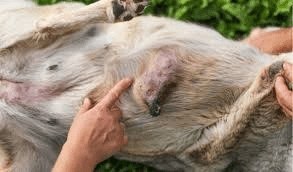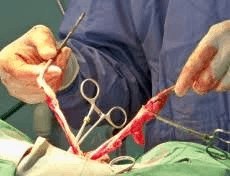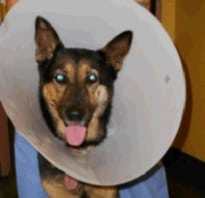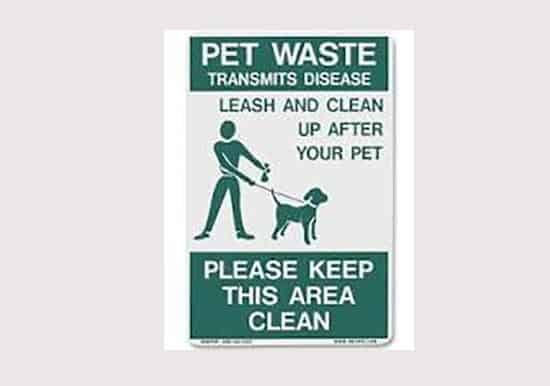Spaying involves removal of the uterus and ovaries. While this is a major procedure, it’s also routinely performed. The best time is when your dog has reached close to her full size and has not experienced a heat cycle.Ensuring your female dog cannot reproduce by the procedure known as spaying, is one of the most important parts of caring for the female dog. The benefits outweigh the risks and go beyond simply not having puppies, although it’s important to note that pet overpopulation is a serious problem.
All the Reasons you should Spay your Female Dog
Mammary Cancer Prevention
A female dog spayed before her first heat will have a near zero chance of developing mammary cancer.But is it too late if a dog is already past her second heat? No, in fact spaying is important even in female dogs who already have obvious tumors. This is because many mammary tumors are stimulated by estrogens; removing the ovaries, the source of estrogens, will help retard tumor spread.After the first heat, this incidence climbs to 7% and after the second heat the risk is 25% (one in four!). It is easy to see that an early spay can completely prevent what is frequently a very difficult and potentially fatal form of cancer.

Spaying removes both the uterus and both ovaries and is crucial in the prevention as well as the treatment of mammary cancer.
Pyometra Prevention
Pyometra is
the life-threatening infection of the uterus that generally occurs in
middle-aged to older female dogs following their heat cycle. The hormone
progesterone, which primes the uterus for potential pregnancy, does so
by causing proliferation of the blood-filled uterine lining and
suppressing uterine immune function. It is thus easy during heat for
bacteria in the vagina to ascend to the uterus and cause infection.
Without treatment, the dog is expected to die. She must be spayed
quickly if her life is to be saved.
- Pyometra
is an extremely common disease of unspayed female dogs. One in four
female dogs who have survived to age 10 will get it.
- Without treatment, the dog will die.
- Treatment is expensive.
- Treatment involves surgery in a potentially unstable patient. Mortality rates with surgery have been reported as high as 17%.
- Spaying prevents the whole thing.
If you still decide against spaying, be familiar with the signs of pyometra, which include loss of appetite, lethargy, vomiting, excessive thirst, and usually (but not always) obvious vaginal discharge.
Simple Convenience
The female dog comes into heat every eight months or so. There is a bloody vaginal discharge and male dogs are annoyingly attracted. Often there is an odor.
All of this disappears with spaying.
What Happens During a Spay?

externalized here and will be removed
with the uterus
While every veterinarian approaches how they perform surgery a little differently, the basics are below:
An incision is made on the midline of the abdomen, and the ovaries, uterine horns and uterus’ attachments to other abdominal structures are tied off and surgically detached. The abdomen is checked for bleeding and two or three layers of stitches are placed to close the incision.
Sometimes an external layer of stitches are placed. Other times, they are all bruied under the skin. Your veterinarian will tell you if skin stitches need to be removed. If they are present, you will need to return in 10 to 14 days to have them removed.
Your dog is monitored until she recovers from surgery and is then kept under observation room until she is able to walk.
Some veterinarians feel strongly that a night in the hospital is important to an uneventful recovery. This night in the hospital is similar to strict bed rest, just what you would expect to be needed after a major abdominal surgery.
Other veterinarians feel that the pet is better off at home where they can be monitored as most day practices don’t have anyone there to observe your dog after hours.
As with all things medical, other veterinarians may have a different opinion and your veterinarian may send your dog home at the end of the day as long as they are deemed stable.
What to Expect at Home

Most spay patients go home the same day of the next day as if nothing had happened, although pain medication is usually dispensed for a few days post-operatively.
Some nausea may occur in the first couple of days after surgery and it would not be unusual for the dog to eat a little less for the first 24-48 hours.
Dogs who show a propensity to lick their stitches will need an Elizabethan or “E” collar to restrict access to the stitches. This is not very comfortable for the dog but it must be used strictly until the stitches are out and the incision is healed.
Activity should be restricted during the week following surgery. Excessive activity can lead to swelling or fluid accumulation under the incision or even worse, a tear in the internal incision line. If a fluid pocket forms, it should resolve on its own after a few weeks.
If something has torn inside, obviously the situation is more serious so it is prudent to have any incision swelling inspected at the veterinarian’s office. Fluid drainage from the incision would also be reason for a recheck.
What about Behavioral Changes?
The female dog’s reproductive tract is dormant for most of the year. It only activates for the three-week period of heat. This means that from a behavioral stand point, the female dog acts spayed most of the time. This said, there has been a documented slowing of metabolism after spays and it may be necessary to use a reduced calorie food in an adult dog. Check with your veterinarian about nutritional recommendations.


